Veteran commodity futures broker Bill Baruch, from Blue Line Futures, navigates hard assets to conclude that maybe the worst of 2022 is behind us.
Sponsor’s website: www.bluelinefutures.com
Summary – IBKR Podcasts Ep. 31
The following is a summary of a live audio recording and may contain errors in spelling or grammar. Although IBKR has edited for clarity no material changes have been made.
Andrew Wilkinson
Hello everybody, welcome to today’s podcast. This is Andrew Wilkinson, director of trading education with Traders’ Insight Radio and I’m delighted to have with me today, President of Blue Line Futures and Blue Line Capital, Bill Baruch. How are you, Bill?
Bill Baruch
Terrific, thanks for having me on today.
Andrew Wilkinson
Very welcome. Bill is an avid contributor to our Traders’ Insight at tradersinsight.news. We always welcome his commentary, puts out some great video and written commentary pretty much on a daily basis, so I don’t know how you get the energy to do all of that Bill.
Bill Baruch
I love markets and what I write really sets up my trading day, so I call it my trading journal … you know layout, the fundamentals, technical, levels and it helps me and sharing with others, hopefully it helps them.
Andrew Wilkinson
Indeed, we hope it does. Don’t forget folks, have a look at that on tradersinsight.news. Bill, August is underway. Can you say that much of the early 2022 problems are out of the way, or is 2022 only going to get worse? What do you think? What does the world look like from your perspective?
Bill Baruch
I’d like to think that we’re not going to get worse to say, we’re moving into this easy movement now and the markets things just going to be much better. That’s stuff to say too. I do — I’ve been thinking that the worst could be behind us and a lot of that is riding on inflation maybe a less hawkish Fed, so I think we are going to have an improvement here in the second half of the year, at least for the next couple of months. It’s a window, you know from that June through September where I think things are going to improve and re-evaluate from there on.
Andrew Wilkinson
So that’s kind of in respect to the equity markets in general would you say? What about some of the other commodity markets or the other asset classes?
Bill Baruch
Yes, you know the equity markets took a big turn south with the May CPI number in June, but right after that we did see the commodity markets top out too. It was the really hot inflation meant the Fed had to be extremely aggressive. We saw expectations for rate hikes pick up a bit and the Fed followed through with the two 75-basis point hikes, one just took place here at the end of at the end of July.
Coming out of that CPI number we saw again, commodities top out. The Bloomberg Commodity Index fell about 20 percent and some of the things that I watch very closely when trading specifically one thing that was very attractive to me was the metals. You look at the Commitment of Traders [report] you start to see positioning get bearish and more bearish and look for things like that where the negativity picks up to an extreme level, and that really laid the groundwork for buying opportunity to the end of July in in metals.
Similar to that, what it did a little bit earlier in the equity market … so that when you get this peak negativity, all the sellers have sold … it does lay the groundwork for really attractive rebounds in the markets, and I think that’s what we’re starting to see. I like to think that this market and risk assets can carry a bit more than people expect.
You’re starting to hear the word “pivot”, “Fed pivot” and I don’t think I don’t consider what we’ve heard from the Fed as a pivot. I do see it as being less hawkish, and that’s going to be supportive for risk assets. And if they’re not tightening financial conditions as hard and as fast as expeditiously, that’s the term they like to use, as they have then that does lay the groundwork for some relief within the economy and some improvement within the economy.
But when were to talk about the economy specifically, I’d like to look at the equity market as a forward indicator in things like housing and housing market, as sort of a reactive indicator and we could be in the sort of the middle, and I think of sort of the housing coming in a bit, and so I think it’s all it’s a very fluid situation where things are developing, but there’s definitely been some attractive trades within the market and it excites me for the second-half of the year.
Andrew Wilkinson
Well Bill, talk a little bit to this year number one enemy is inflation. Give us your bird’s eye view of the commodity complex. So where are some of those — What’s really taking the brunt of the inflation trade in the commodities world?
Bill Baruch
Well, you know the inflation … the question is, is it peaking or did it peak? I think we’re in a pocket of time where some of the worse, meaning that the hottest inflation is behind us and what I mean by that is looking at from a month over month increase. We had some very hot increases from May to June, but even more so from June to July headline inflation increasing 1.3% and core month to month CPI increasing by 7/10.
So right now, you’re looking at the Cleveland inflation nowcast, they are anticipating CPI for July. The only increase from July to August is only about 3 or 4/10, so you’re seeing this this really start to come in and that’s become a tailwind to the commodity space, at least in the metals. I think you’ve combined that with some of the extreme negativity I just mentioned, it does pave the groundwork for a rebound.
When we get into some of the other commodities such as agricultures, I think there’s other narratives at play too, where we had the war in Ukraine and potentially getting some of these exports out had a big impact of the blow off top, extreme selling and agriculture’s but it’s not just a war market, if you will it’s a planting season and not only planting season, but you know they’re harvesting now and are we going to get the type of crop that that was anticipated? And I think if you’re looking at things like corn, I think after getting the sell off and some relief from the Fed’s aggressiveness, there’s commodities like corn that could have a really nice potential impact. It could impact it favorably.
You know, others? I’m not so sure like you look at lumber and lumber is down against a big long term support level but if the housing market is going to be moving through the thick of a crisis right now, maybe that doesn’t jump and rebound as quickly as some of the other commodities. But at the end of the day, it’s this pocket of time with inflation and if inflation from June through August, which is going from April-May. That was what we’ve been eyeing. We’re eyeing the inflation from June through August, and those numbers are coming in. Like I said, the July number which will get here in a couple weeks is only about — actually, 3/10 is what they’re predicting is a month over month and that does give credence to the Fed slowing their hawkishness. So, it paves the way for rebounding commodities, it paves the way for a little bit of a weaker dollar, and these are the things that excite me in the coming months.
Andrew Wilkinson
So, let’s talk a little bit more about the about the dollar. Typically, a bull market for commodities is often associated with the cheapening of the dollar, but that hasn’t happened. We’ve got the euro down to parity with the dollar. We’ve seen sterling down to about $1.19. Admittedly it’s bounced now, but what — Just shed some light on what’s happened with the dollar and how it’s impacted commodities?
Bill Baruch
Yeah, when we look at commodities, we’re looking at commodities priced in in dollars. So, the stronger the dollar, typically theoretically the weaker the commodity and they say if you get the dollar right, you’re going to get a lot of things right. I am firm believer that the US dollar can … typically does top in the onset or early stages of a hiking cycle. That’s ultimately because you see everything get priced in very quickly, meaning markets can be very efficient and we did see the dollar top. In fact, the dollar continued to move higher as we moved through this hiking cycle in through June, and that ultimately is because the Fed’s goalpost had to keep moving as inflation picked up. So, we’re starting to see that reprieve in the gains of inflation but as well, it’s not just the dollar. The dollar relative to other currencies.
So today or generally speaking, in ISM manufacturing for July, which in this first week here August comes out and it shows that prices paid or ISM prices for manufacturing came in at 60 and the expectations were 74 and from June they were 78. So, you’re seeing inflation through prices. These are producer prices; this cost is coming in and that weighs on the dollar. But the same day that we had this news, you’re looking at the US dollar against the Chinese Yuan rallying. So, the US Dollar Index against a basket of currencies: against the Euro, against the Pound, against the Yen was weaker, but the US dollar against the Chinese Yuan was stronger and the reason why it was stronger is because you also had very poor data out of China. So, it really highlights the fact that the US dollar is always going to be paired against something else, and for the Euro being the major driver of the Dollar Index, it’s 57% of the Dollar Index, the Euro has been weakening, not so much cause of the dollar strength, although the dollar strength has something to do with it.
It’s the energy crisis in Europe, and in that energy crisis, I think a lot got priced in very quickly. I don’t think it’s over, but I think again, markets can be efficient, so pricing in very quickly it’s — I think if you look back, memorial [day] weekend and that weekend was when they announced that they are going to embargo Russian crude or at least start to embargo Russian crude and it’s not a coincidence that that German yields started to rip higher after that news and there’s going to be this inflation that’s coming through Europe because of the energy crisis and the question becomes, are they going to have enough energy to keep up with the output, industrial output and heating homes through the winter?
So, I think we’ve quickly priced in the first half of this crisis, but the second half, you know, leaves a lot of questions and so to speak when winter comes. So yeah, to answer your question more specifically about the US dollar, it’s always paired against something. I think there was again, a combination of goal posts being moved because the US inflation, but also because what was taking place in Europe. So, I’d like to think right now we’re going to get a reprieve in the US dollar now that we have some inflation that’s showing signs of coming in and we’ve had that first half of the US of the European energy crisis priced in. I’m watching most closely in the Dollar Index, the 105 area, which was a real big breakout, and so if we can get some steady price action below 105, maybe some of the worst of the rally would be behind us.
Andrew Wilkinson
Arguably, at the heart of the inflation crisis is energy as you just alluded to. What’s your take on crude [oil] natural gas and heating oil?
Bill Baruch
I remain bullish on crude overall. I mean, we’ve seen quite a bit of volatility and it’s one of the things with the CME on the futures side, has done a terrific job with bringing micro contracts. No matter how big you want to trade, being able to size your position in the proper way amid volatility is extremely important, so micro contracts have given us the ability to really size, to be precise, with what you’re trying to do.
I remain bullish on crude oil, but it’s definitely a fluid situation where you have extreme volatility, and I think really in the down days, you get excessive selling because proprietary trading firms sometimes have to manage risk and they can’t stay within that volatility, just see liquidation. Doesn’t mean that the market is becoming broken as we’ve seen time and time again crude has rebounded, pretty well off the $90.00 area. So, I remain bullish on crude more because physically the market remains extremely tight. I think that we’re pressing the against the wall here in spare capacity. The US has released a lot of SPR leading into the midterm elections to as more of a political maneuver and it may come back to bite us.
So, I remain bullish on crude oil, what’s been more volatile than crude oil has been natural gas. I mean, natural gas has been seeing some extreme volatility and one of the ways we’ve looked at being able to be in that market is using call spreads to manage our risk and going long on call spreads and taking in at times of opportunity … the thing to think about there is the European natural gas prices are a lot higher, I mean three-to-four-times higher. I could be wrong on but quite a bit higher when you price it and put a price in the same metrics, and I do think those levels could converge here because you’re going to see a higher demand for US natural gas. So, I remain — You know, LNG, I remain very bullish on the Henry Hub Natural gas contract.
Just being patient and waiting for your opportunities. I think we’re in the middle innings potentially or approaching the innings of a long-term bull market in the energy space. So, the best type of thing, the way — the thing about it is patients. Again, think I’ve pointed that a couple times, but it’s definitely a market to be patient in and I think will be higher as time goes.
Andrew Wilkinson
OK, let’s turn now to lumber and copper and the reason I mention these is that they’re typically good indicators of the housing market from the construction perspective, obviously. With monetary tightening underway, and arguably with no end in sight, although you note that inflation may have hit its peak. What are those markets telling us about the outlook for the economy?
Bill Baruch
Well, yeah, you’re making a great point there. You know, as mentioned earlier lumber sold off pretty sharply this year. There’s a big area of support here for lumber, but I think that the housing market is still digesting what’s taking place within the economy. The stock market can forward look 9,12,18 months and the stock market has digested all of that, but the housing market is more reactive. So, I think that lumber is definitely telling us how weak the demand is, and I think that’s something that that could last for a bit.
Now copper is a little bit of a different story in the sense that China is the … consumes more 50% of the world’s copper. Supplies are tightening. I’m actually very, very bullish for a number of fundamental reasons behind copper at these levels and from 330 to 350, and really too, even though lumber is really back testing it’s 2020 level. Copper too is back testing its previous 2018 high and copper has responded so far off of that pretty well. I think that we will continue to see copper work higher, I don’t think we’re going to see contending lower prices unless the Fed has to reinvigorate an extreme hawkish tone. But at least for the big kind of lines with this pocket of time where we see inflation dissipating a bit the month-to-month gains, and it allows the recovery in commodity prices. I wouldn’t to be surprised that if the lumber does just follow the tune of commodities, but with that said, I’d favor copper a bit more because of China and I do think that some of the weak economic data of China is obviously a byproduct of lockdowns, and there’s been signs of decent growth in China when they’ve avoided lockdown. So, I’m interested to see in the coming months, two months or so, what we get growth wise out of China and I think it will paint a better global growth forecast.
Andrew Wilkinson
Bill, thank you very much for that perspective on the Commodity Futures markets, as well as what the Feds doing and how the economy is taking shape during this tightening cycle. Don’t forget folks, you’ll findBill Baruch’s Blue Line Futures commentary at tradersinsight.news. And don’t forget to look out for all of our online courses at tradersacademy.online. Thanks Bill.
Bill Baruch
Thank you.
Andrew Wilkinson
Bye for now.
Disclosure: Interactive Brokers
The analysis in this material is provided for information only and is not and should not be construed as an offer to sell or the solicitation of an offer to buy any security. To the extent that this material discusses general market activity, industry or sector trends or other broad-based economic or political conditions, it should not be construed as research or investment advice. To the extent that it includes references to specific securities, commodities, currencies, or other instruments, those references do not constitute a recommendation by IBKR to buy, sell or hold such investments. This material does not and is not intended to take into account the particular financial conditions, investment objectives or requirements of individual customers. Before acting on this material, you should consider whether it is suitable for your particular circumstances and, as necessary, seek professional advice.
The views and opinions expressed herein are those of the author and do not necessarily reflect the views of Interactive Brokers, its affiliates, or its employees.
Disclosure: Futures Trading
Futures are not suitable for all investors. The amount you may lose may be greater than your initial investment. Before trading futures, please read the CFTC Risk Disclosure. A copy and additional information are available at ibkr.com.
Disclosure: Forex
There is a substantial risk of loss in foreign exchange trading. The settlement date of foreign exchange trades can vary due to time zone differences and bank holidays. When trading across foreign exchange markets, this may necessitate borrowing funds to settle foreign exchange trades. The interest rate on borrowed funds must be considered when computing the cost of trades across multiple markets.




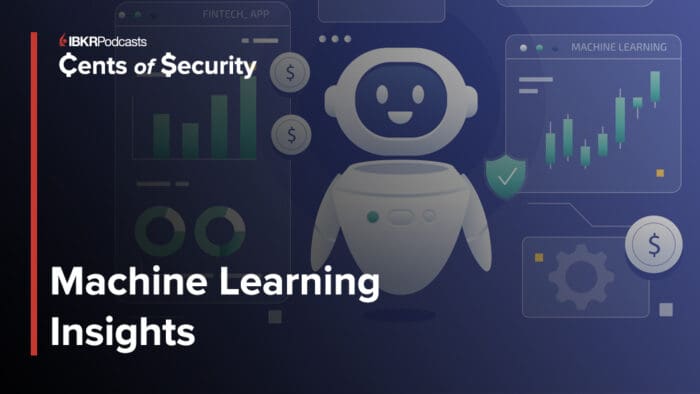

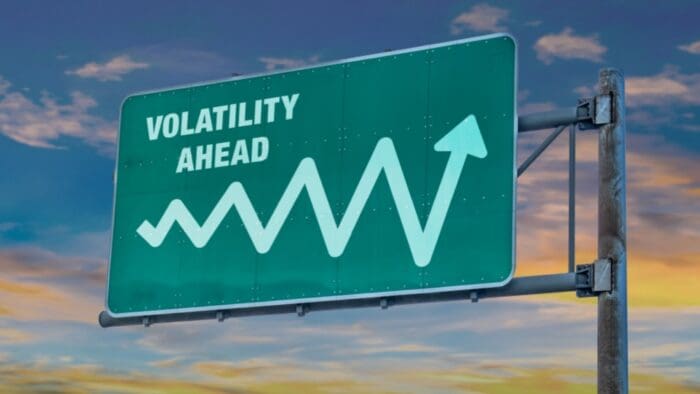

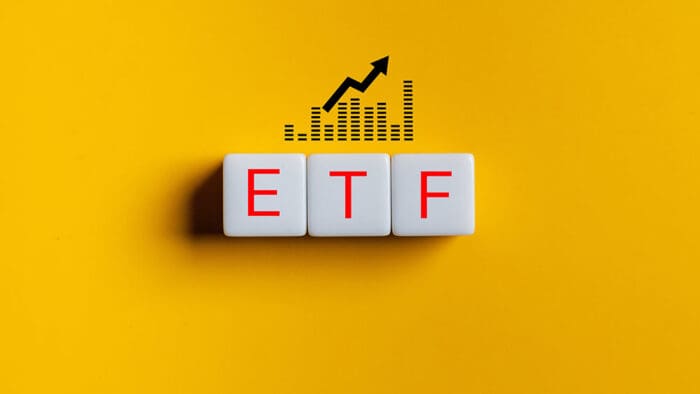

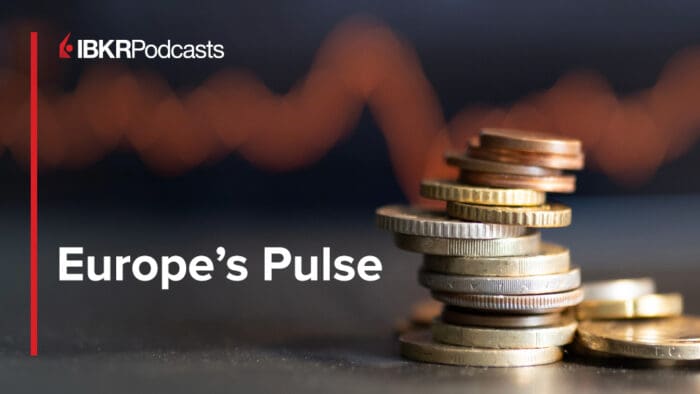
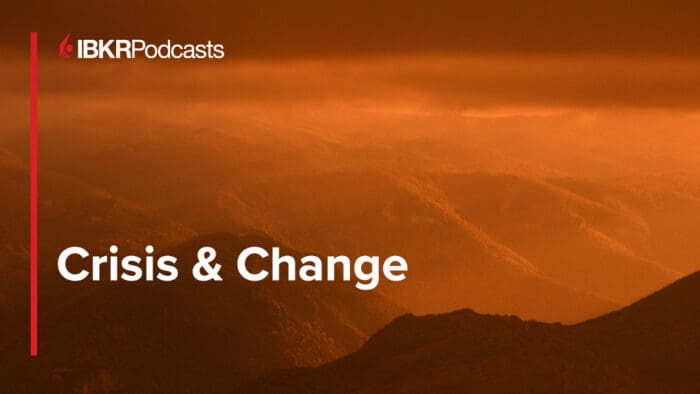



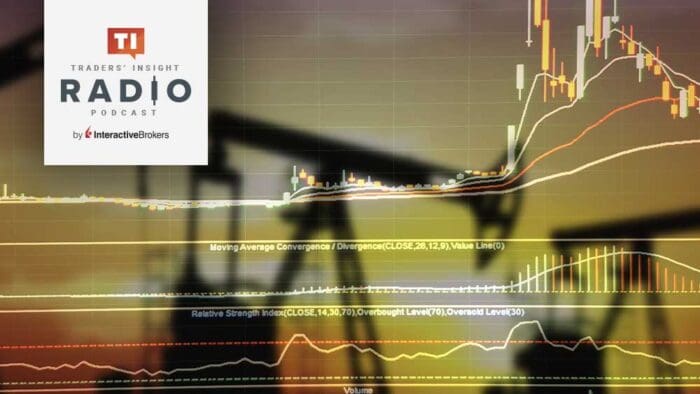

Join The Conversation
If you have a general question, it may already be covered in our FAQs. If you have an account-specific question or concern, please reach out to Client Services.